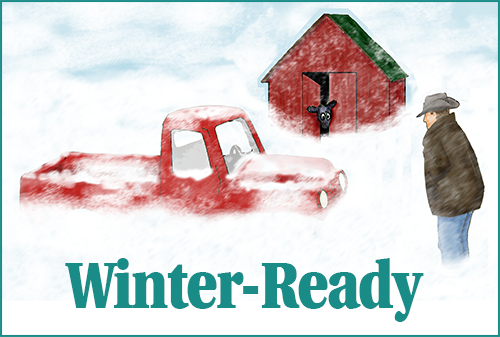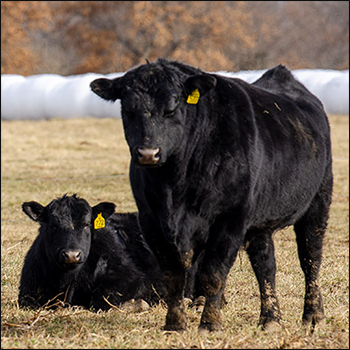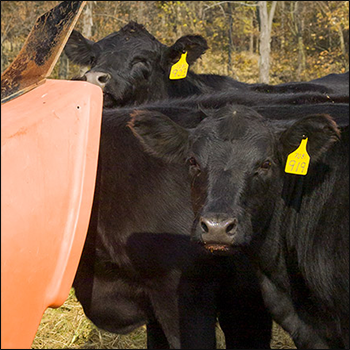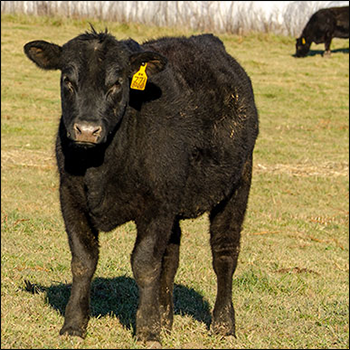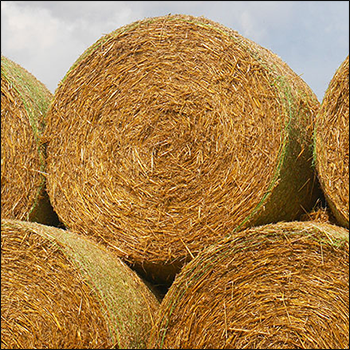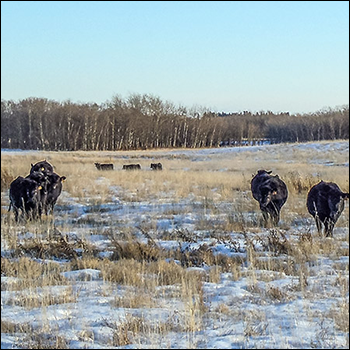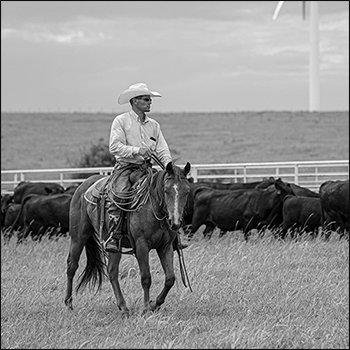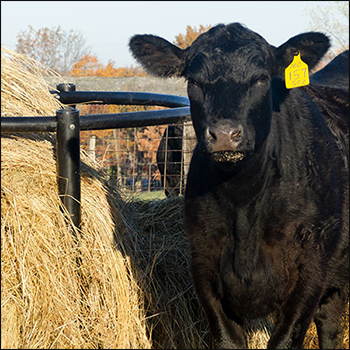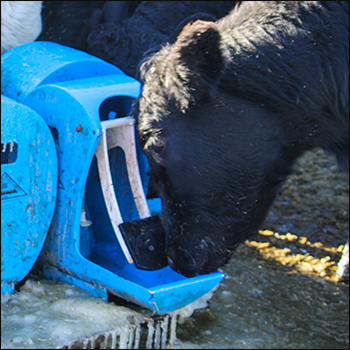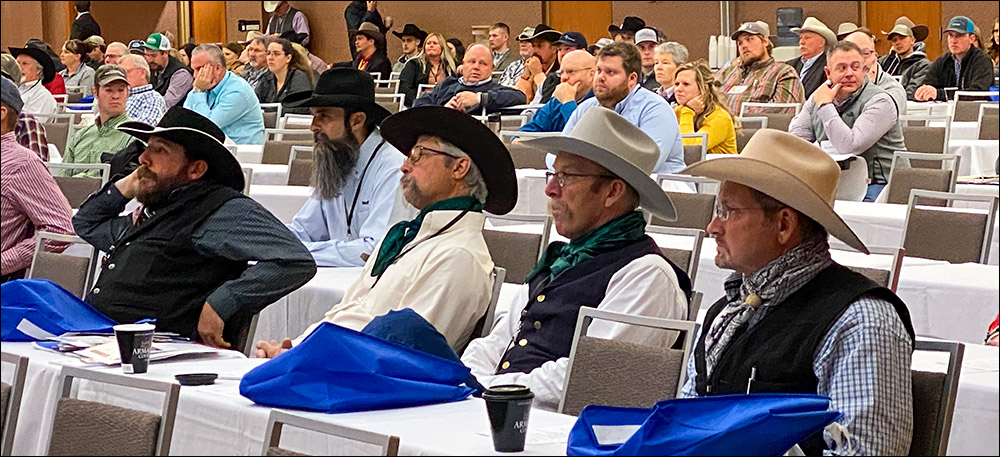
Range Beef Cow Symposium Offers Optimism
Conference gives positive industry outlook from price trends to tech tools.
“Boy, how things have changed ... It’s a completely different world,” stated economist Derrell Peel as he kicked off the 2021 Range Beef Cow Symposium hosted Nov. 16-17 in Rapid City, S.D. The biennial event brought together more than 450 cattle producers and industry leaders for speaker presentations, a trade show and networking.
Occurring every other year — and hosted by beef Extension faculty from South Dakota State University (SDSU), Colorado State University, University of Nebraska and University of Wyoming — the last symposium was in November 2019, just a few months before the COVID-19 pandemic changed the world.
Yet Peel noted it has not just been the pandemic affecting industries. Other unanticipated “black swan” events — including the Tyson plant fire in August 2019, the bitter cold winter storm in February 2021, and the cyber attack in May 2021 — are among several of the events affecting the world. Additionally, specific to the cattle industry the lack of packing and processing infrastructure, labor shortages, transportation shortages and rising electricity/energy costs are all critical components to the future success of the industry.
The complexity of the cattle and beef industry has become more and more evident, Peel told attendees. “I believe it’s the most complex industry on the planet.”
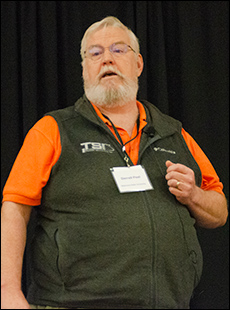 |
“Boy, how things have changed ... It’s a completely different world,” stated economist Derrell Peel as he kicked off the 2021 Range Beef Cow Symposium hosted Nov. 16-17 in Rapid City, S.D. The biennial event brought together more than 450 cattle producers and industry leaders for speaker presentations, a trade show and networking. |
Despite the volatility and challenges, Peel said, “the markets worked, and I argue have worked very well in the face of unprecedented shocks.”
CattleFax Market Analyst Patrick Linnell reported that a bright spot for the U.S. beef industry is that beef demand both domestically and globally has stayed overwhelmingly positive. In fact, Linnell said, “U.S. beef exports have been red hot” — with a 20% spike in 2021 and a continued 5% jump projected for 2022.
Linnell attributed this to several factors. The growing global population is moving from lower class to middle class and is seeking protein, especially beef. Plus, the U.S. economy is more fully opened post-COVID, while many economies have not.
Additionally, U.S. beef has retained a high market share for higher-quality protein. Linnell reported that demand for USDA Choice and Prime beef is up 75% since 1998. Along with that, Linnell noted that the market is putting value emphasis on differentiated product such as natural and Non-Hormone Treated Cattle (NHTC). So, he encouraged producers to seek these value-added options if they fit into their operation.
Regarding harvest capacity, Linnell reported, “There is optimism in the forecast for new facilities coming online in 2022 and beyond.” He added, “It is important we get those. If we want to be a growing industry, we need to have the shackles there for the next growth cycle to sustain a 32-million-head cow herd.”
Going into spring 2022, CattleFax is projecting mid- to upper $140s per hundredweight (cwt.) for fed-steer prices. From January to May 2022, 550-pound (lb.) and 650-lb. steer calf prices are expected to climb, possibly reaching $185-$195 per cwt. by spring. The cull-cow market could also be strong in February and March 2022.
Tech and other opportunities
In addition to market outlooks, Range Beef Cow Symposium attendees were given an array of production insights and emerging technology tools to offer efficiencies within their operations.
Fourth-generation Nebraska rancher David Schuler discussed herd criteria to evaluate to choose cows, calves and bulls that perform ideally for individual operations. University of Nebraska Extension specialist Karla Wilke provided a deep dive into existing and new research for managing yearlings with supplementation to generate the highest economic return at the lowest cost of gain. South Dakota State University meat scientists Amanda Blair and Christina Bakker provided considerations to assist producers in direct marketing beef to consumers. Blair encouraged producers to consider their product attributes and then market accurately and transparently to the consumer.
Regarding emerging technology, South Dakota State University range scientist Jamie Brennan provided an overview of GPS ear tags for cattle tracking. He noted future applications for checking animals remotely and monitoring daily animal behavior, which may allow for addressing health issues sooner. Colleague Krista Ehlert detailed the use of virtual fence collars on cattle at SDSU’s Cottonwood Research Center to rotationally graze certain areas of a pasture or exclude cattle from grazing riparian zones. Similar to dog shock collars, the cattle collars emit an audio cue and then a shock if cattle move into the exclusion zone. The collars have been found to be 80%-85% effective.
University of Wyoming’s Steve Lupien explained blockchain technology to create records that can never be deleted.
“When you make a transaction,” he said, “they are stacked in blocks and chains and each block builds. The longer the chain, the safer and more secure the data is.”
Lupien says industry is already using the technology for process-verified program (PVP) records, and he anticipates growing use for branded programs to prevent counterfeit product, land records, and various payment systems that no longer require a third-party. Additionally, Lupien sees blockchain used for asset tokenization, such as tax credits or carbon-offset credits.
Lupien concluded, “Blockchain is not just a way to track information, but also value. And, it is going to become as ubiquitous as the internet.”
The next Range Beef Cow Symposium will be hosted in fall 2023 by Colorado State University.
Stay tuned for full conference coverage in the Angus Beef Bulletin EXTRA and the Angus Beef Bulletin.
Editor’s note: Kindra Gordon is a cattlewoman and freelance writer from Whitewood, S.D. Photos by Kasey Brown.
